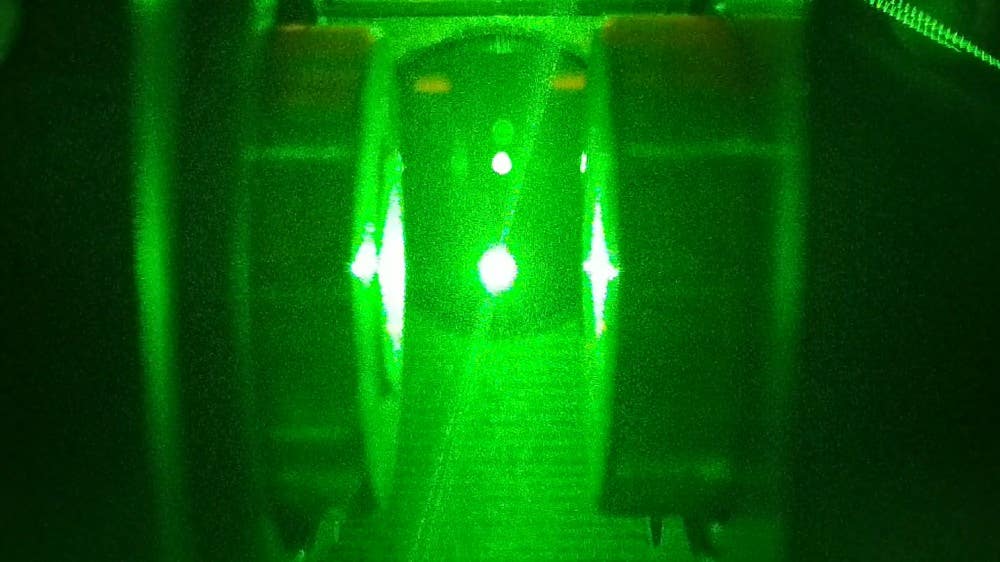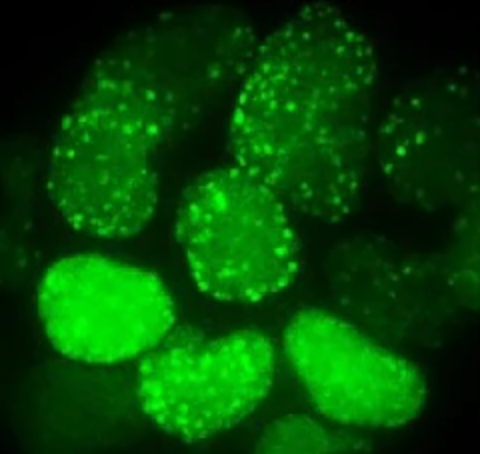Futuristic infrared contact lenses give wearers night vision superpowers
Revolutionary contact lenses developed by scientists allow wearers to detect infrared light, promising “super-vision”.

Researcher places infrared contacts in participant’s eyes. (CREDIT: Yuqian Ma, Yunuo Chen, Hang Zhao)
Scientists have developed revolutionary contact lenses that grant wearers the ability to see infrared light—a feat humans naturally cannot achieve. This breakthrough, detailed in the journal Cell by neuroscientist Tian Xue and his team from the University of Science and Technology of China, might soon replace bulky night-vision goggles and usher in new possibilities in emergency and security situations.
Breaking the Limits of Human Vision
Human eyes typically detect only a small fraction of the electromagnetic spectrum known as visible light. This light ranges from 400 to 700 nanometers. Unfortunately, infrared radiation, making up over half the sun’s energy, remains invisible to people due to physical limitations of our visual system.
Until now, detecting infrared has required cumbersome equipment like night-vision goggles, which need power and complex structures. Tian Xue explained, “Our research opens up the potential for non-invasive wearable devices to give people super-vision. There are many potential applications right away for this material. For example, flickering infrared light could be used to transmit information in security, rescue, encryption or anti-counterfeiting settings.”
Innovative Technology at Eye-Level
The newly designed lenses use nanoparticles embedded in soft, flexible, non-toxic polymers—materials commonly found in regular contact lenses. These nanoparticles absorb near-infrared light (800-1600 nanometers) and convert it to visible wavelengths between 380 to 750 nanometers. The nanoparticles specifically include sodium gadolinium fluoride combined with luminescent elements like ytterbium, erbium, and gold.
This design significantly differs from earlier techniques that required injections directly into the retina. Such invasive methods raised concerns about human acceptance. This wearable approach avoids surgery entirely, offering an accessible and comfortable solution.
Related Stories
Seeing Infrared: Proven in Animals and Humans
Experiments began with mice, proving the lenses' effectiveness. Researchers observed mice wearing the infrared lenses preferred staying in dark environments rather than boxes illuminated by infrared. Physiologically, these mice showed pupil constriction under infrared illumination and clear activation in visual processing brain areas during scans.
The successful animal tests encouraged researchers to examine human responses. Human participants accurately perceived infrared signals, such as flashing lights transmitting Morse code-like information. Xue described the dramatic difference: "Without the contact lenses, the subject cannot see anything, but when they put them on, they can clearly see the flickering of the infrared light."
Interestingly, humans experienced better infrared detection with their eyes closed. This improvement occurs because infrared light penetrates eyelids more efficiently than visible light, reducing interference and boosting clarity.
Seeing Color in the Infrared Spectrum
Beyond merely detecting infrared light, the team took another step, enabling color differentiation within the infrared range. They developed special nanoparticles capable of converting specific infrared wavelengths into different visible colors—980 nanometers into blue, 808 nanometers into green, and 1532 nanometers into red.
These modified "trichromatic" lenses now allow wearers to distinguish infrared colors, significantly enhancing the potential detail and usability of infrared vision.
This innovation might also have an essential medical application. "By converting red visible light into something like green visible light, this technology could make the invisible visible for color-blind people," Xue noted. This feature could potentially transform how people with color blindness interact with their environment.
Challenges and Future Developments
Despite the lenses' remarkable capabilities, researchers acknowledge some limitations. Currently, the lenses only detect infrared radiation from strong LED sources. This limitation restricts their immediate use in everyday scenarios where infrared signals are weaker.
Another issue involves resolution. Because the lenses sit directly on the eye, converted infrared images lose sharpness due to scattering. To overcome this, the team developed complementary infrared-sensitive glasses, allowing wearers to view sharper, higher-resolution images.
"In the future, by working together with materials scientists and optical experts, we hope to make a contact lens with more precise spatial resolution and higher sensitivity," Xue explained. This enhancement would further expand the lenses' usefulness in broader practical scenarios, from emergency rescues to complex security operations.
This groundbreaking work demonstrates the vast potential of wearable technology. By enabling humans to perceive a previously hidden world, infrared contact lenses could reshape how we see our surroundings and interact with technology, particularly in critical and life-saving applications.
Note: The article above provided above by The Brighter Side of News.
Like these kind of feel good stories? Get The Brighter Side of News' newsletter.



